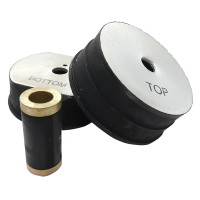Easa Part 66 Module 03 - Electrical Fundamentals
Overview
|
This book covers basic electrical systems and concepts for the aviation maintenance technician, From basic theory to AC and DC generators and motors, each topic is explained in step by step detail. You will learn by understanding concepts, not just rote memorization and you will learn how and why each skill is useful in the day-day tasks of the aircraft technician in an aviation maintenance environment.
This book is fully compliant as EASA Part 66 module 3 for B1 and B2 licenses and has been given approvals by numerous EASA based civil aviation authorities. |
Table of Contents
Electron Theory- Structure and distribution of charges within atoms, molecules, ions, and compounds; structure of conductors, semiconductors, and insulators.
- Distribution of electrostatic charges; electrostatic laws of attraction and repulsion; units of charge; Coulomb's law.
- The following terms, their units, and factors affecting them; potential difference, electromagnetic force, voltage, current, resistance, conductance, charge, conventional current flow, electron flow.
- Production by the following methods; light, heat, friction, pressure, chemical action, magnetism, motion.
- Ohm's law, Kirchoff's voltage and current laws; calculations to find resistance, voltage, and current; internal resistance of a supply.
- Affecting factors; specific resistance; color code values and tolerance; preferred values; wattage ratings; resistors in series and parallel; calculations of total resistance; operation of potentiometers and rheostats; operation of Wheatstone Bridge; temperature coefficient conductance; fixed resistors; stability; tolerance; methods of construction; variable resistors; thermistors; voltage dependent resistors.
- Power, work, and energy; dissipation by a resistor; power formula; calculations.
- Area of plates, distance between plates; dielectric constant; working voltage; capacitor types; color coding; calculations of capacitance in series and parallel; exponential charge and discharge; time constants; testing of capacitors.
- Theory of magnetism; properties of a magnet; earth's magnetic field; demagnetization; magnetic shielding; magnetic materials; electromagnet construction and operation; rules to determine magndetic field around conductors; magnetic force, strength, flux density, permeability, hysteresis, retentivity, saturation point, eddy currents; care and storage of magnets.
- Faraday's law; inducing a voltage; induction principles; mutual inductance; rate of change and mutual inductance; factors affecting inductance, number of turns, size, permeability and position of coils; Lenz's Law; back EMF; self induction; saturation point; uses of inductors.
- basic motor and generation theory; components in DC generator; output and generation of current flow; faxctors affecting output, torque, speed and direction of rotation.
- Sinusoidal waveform; current values and calculations; triangular square waves; single/3 phase principles.
- phase relationship of voltage and current in parallel and series; power dissipation; impedance, pahase angle, power factor, and current calculations; true power, apparent power and reactive power calculations.
- construction, principles, and operation; transformer losses; action under load and no-load conditions; power transfer and efficiency; calculation of line and phase voltages; calculation in a 3 phase system; primary and secondary circuits; auto transformers.
- Operation, application and uses of low pass, high pass, band pass, and band stop filters.
- Rotation of loop in a magnetic field; revolving armatures and field type AC generators; 1, 2, and 3 phase alternators; 3 phase star and delta connections; permanent magnet generators.
- AC synchronous and induction motors, single and polyphase; methods of speed control and direction of rotation; methods of producing a rotating field capacitor, inductor, shaded or split pole.
Specifications
- Publisher: Aircraft Technical Book Co.
- ISBN-13: 9781941144848
- Copyright Date: 2019
- Edition: 4th
- Pages: 203
- Binding: Paperback
- Dimensions: 11.0" x 8.5"
- Book Weight: 1.0lbs
- eBook
- File Type: standard pdf ebook
- Print: unlimited
- Copy/Paste: unlimited
- Offline Access: yes
- Search: always
- Bookmarks: always
- System Reqs: Windows, Macintosh, iPad, and more
Version Types
Softcover Book - Printed book with heavyweight cover stock.
eBook EB - A protected document designed for reflowable content. Also referred to as an ePub or "Electronic Publication" format. Easily viewed on both small and large screens. Text, images, and pages will adapt or reflow to fit the screen size of the device, so zooming is not necessary to read. Text size can be adjusted in an ebook reader app. Visit AC Technical Books -eBooks for more details on how to setup your device.
Q&A
Please note, Aircraft Spruce Australia's personnel are not certified aircraft mechanics and can only provide general support and ideas, which should not be relied upon or implemented in lieu of consulting an A&P or other qualified technician. Aircraft Spruce Australia assumes no responsibility or liability for any issue or problem which may arise from any repair, modification or other work done from this knowledge base. Any product eligibility information provided here is based on general application guides and we recommend always referring to your specific aircraft parts manual, the parts manufacturer or consulting with a qualified mechanic.

 Aircraft Spruce Australia
Aircraft Spruce Australia

























